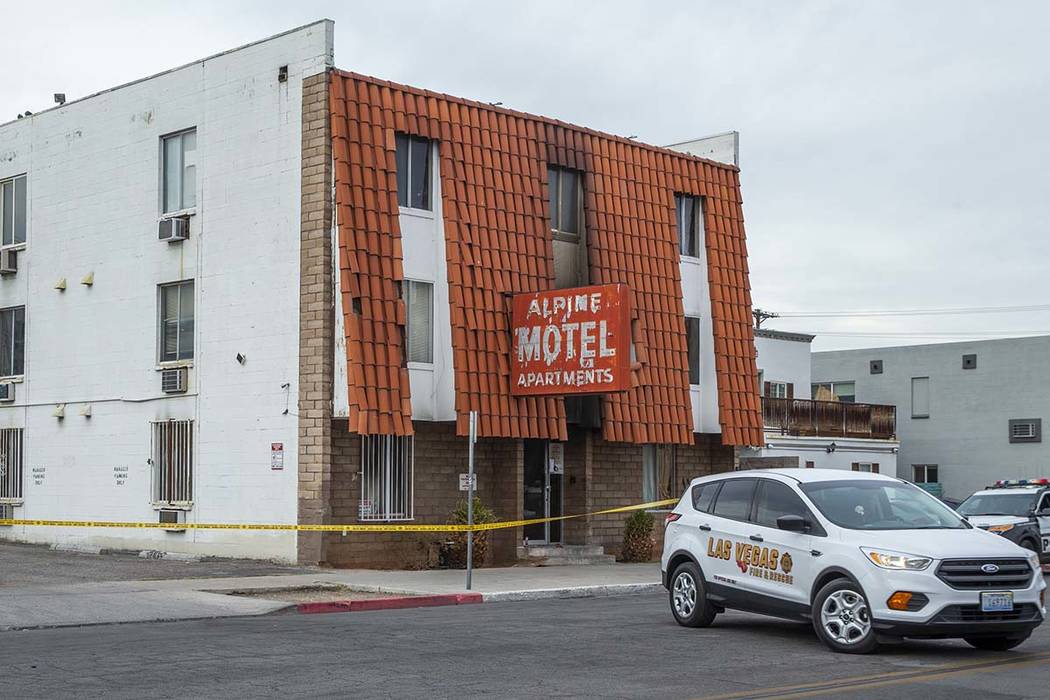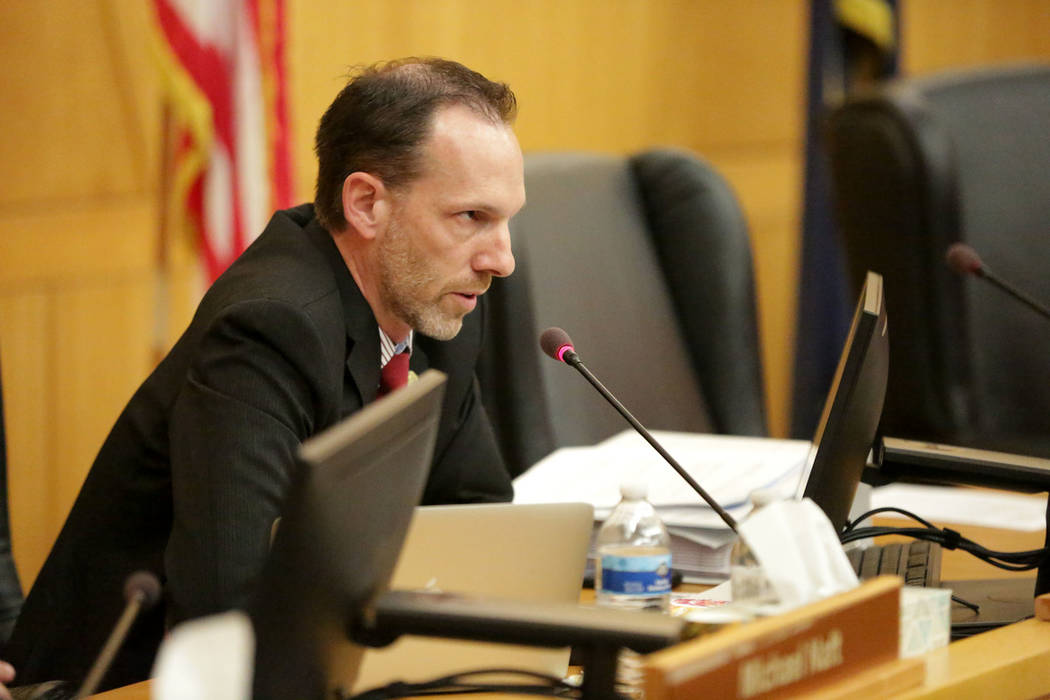Deadly Alpine fire prompts Clark County to catalog dangerous buildings
Clark County officials are building a database of apartment complexes in their jurisdiction that keeps track of fire protection at each, including notes on whether the complex has fire sprinklers and interconnected smoke alarms.
In the aftermath of the deadliest residential blaze in Las Vegas city history, county commissioners want to take steps in an effort to prevent a similar tragedy.
“This is obviously an issue that is on the minds of all of us at the County Commission after the Alpine apartment fire,” Commissioner Justin Jones said Tuesday, referring to the blaze that killed six people in downtown Las Vegas last month.
Jones requested that county staffers identify the county’s most vulnerable apartment complexes so they can be inspected within the next three to four months. The county will send letters to property owners within the next 30 days to inform them inspections will be coming.
He asked officials to decide whether to inspect a broad segment of complexes or perhaps only older properties not required by state law to be outfitted with modern fire safety measures such as sprinklers.
Outgoing Fire Chief Greg Cassell said properties will be prioritized by occupancy and age as officials gather information.
Much work remains
Jones also wants to determine within the next 30 days whether the county could employ contract inspectors as additional resources.
“I feel like we need to do something,” he said.
But as county and city officials proceed with inventories of potentially problematic buildings in their respective jurisdictions, it has become clear that there is much work to be done.
Jones had questioned whether the county’s building department could distinguish how many complexes had exits to the outside in each unit as opposed to only exits via a center hallway, as was the case with the Alpine Motel Apartments.
Jerry Stueve, the director of the county’s Department of Building and Fire Prevention, said officials had identified “a number” of (center hallway apartments), “but I can’t tell you exactly how many and whether or not we’ve captured them all.”
Stueve said officials have inspected 980 apartments, but he added that it was unclear both whether those were complexes or units and when they had been inspected. A county spokesman did not immediately respond to a message seeking clarification. Stueve said it was also not certain how many buildings were constructed prior to requirements that they have fire sprinklers.
Buildings are required to adhere only to the fire safety rules in place when they were built, leaving older complexes at risk with equipment that’s not up to modern standards. A major exception to the rules is a law enacted following the MGM Grand fire in 1980 that killed 87 people, requiring fire sprinkler systems to be installed in all existing high-rise buildings taller than 55 feet.
The Alpine did not have a sprinkler system, and smoke detectors were defective in at least 14 locations throughout the building, city fire officials said.
A Review-Journal investigation in 2018 found that deadly fires often occurred at older residences lacking current safety measures. The issue extended to the unincorporated county as well.
Stueve underscored that inspections have remained a priority for the department, balancing existing buildings with new construction, which historically has been where fire prevention staffers have focused their efforts.
He also said that officials were committed to holding property owners accountable for the safety of their tenants and that officials did not find any record of properties in the unincorporated county owned by Dragon Hotel LLC, the company that owns the Alpine.
County considers other efforts
Commissioner Tick Segerblom on Tuesday asked county staffers to research the costs of retrofitting older residential buildings with modern equipment, including larger water lines to fight fires, and consider how the county might be able to help subsidize those expenses.
Local governments must obtain approval from Nevada’s Board of Examiners, however, before they can adopt safety requirements that are more stringent than state statutes.
But Segerblom expressed caution for another reason.
“My concern is that if we did some retrofitting, it would raise the cost of the building so much that a lot of these low-income tenants wouldn’t be (able) to live there anymore,” he said. “And we obviously don’t want to drive them out because we’re really limited in affordable housing.”
Commissioner Jim Gibson said it seemed like a reasonable request to require that on-site workers and managers in apartment complexes be trained on evacuation routes. Cassell drew on that request to suggest that it be mandated that a fire safety plan be provided to tenants.
But Commission Chairwoman Marilyn Kirkpatrick said she believed that fire safety plans are already required under state law, and instead she pressed for renewed inspections to ensure that property owners are in compliance with such plans.
“I get this is a huge, monumental task, and I get the importance of it,” she said. “But I also am a realist on what we can actually get done sooner rather than later.”
As officials on Tuesday discussed limiting the threat to older residential buildings, they also raised nuances for consideration: Code enforcement would continue to play a key role, fire crews were instrumental in reporting building issues they noticed during daily medical calls and the public is also relied on to report dangerous issues in apartment complexes.
Still, Kirkpatrick noted, as Las Vegas Mayor Carolyn Goodman had before, that many tenants are hesitant to speak up because they fear being kicked out of their apartment.
Contact Shea Johnson at sjohnson@reviewjournal.com or 702-383-0272. Follow @Shea_LVRJ on Twitter.
























